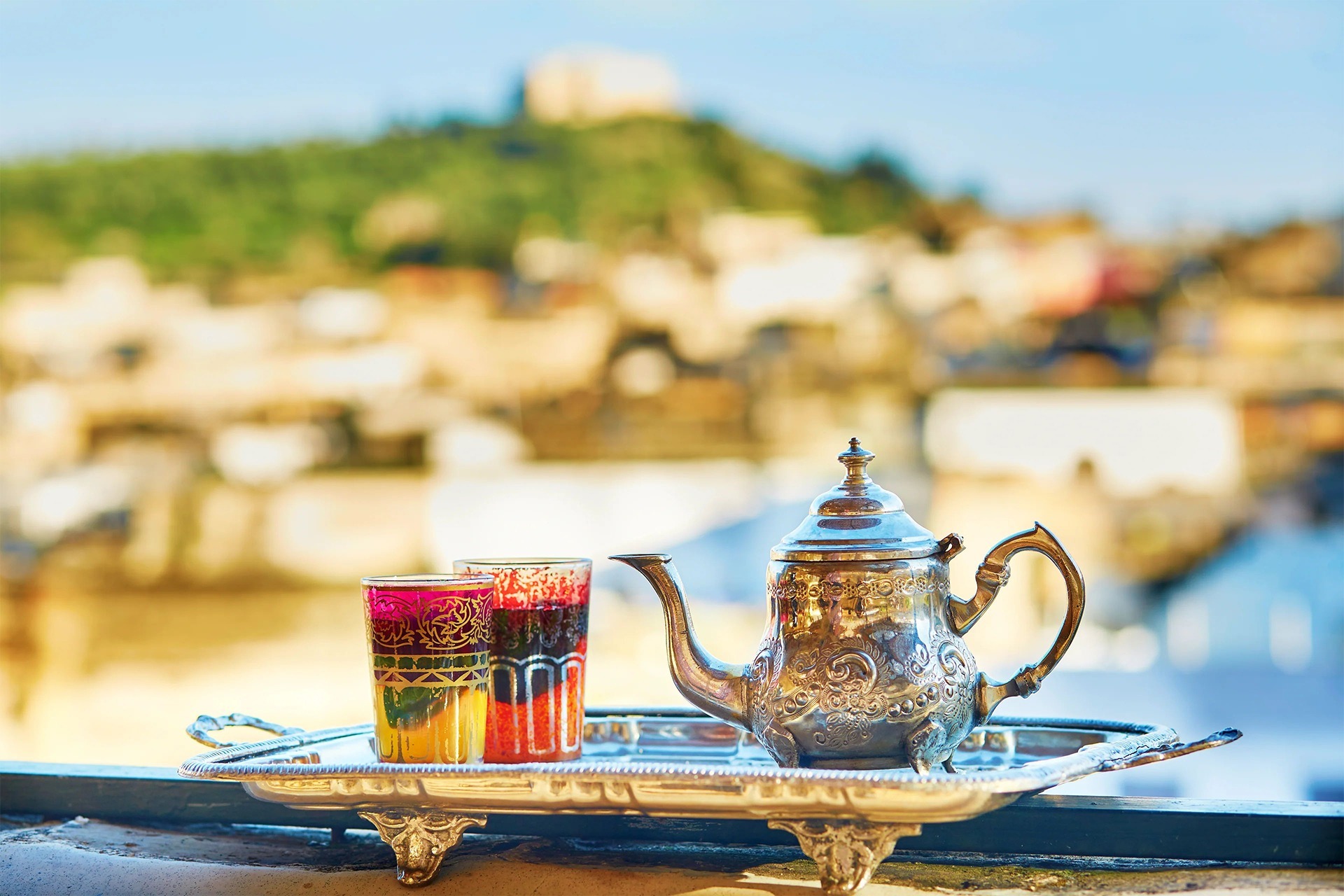The Moroccan “Tea Pot” is not only a vessel for serving tea, or “atai” in the Moroccan dialect, but with its intermediary between the “tray” and the cups, it constitutes a special “maestro” for leading various forums with their diverse occasions and different times and places.
It is also considered an important part of the basics of the kitchen, and a symbol of the Moroccan heritage. The craftsmen have preserved its manufacture since the introduction of the “tea” plant to Morocco in the eighteenth century – according to what historians have agreed – until now, and they have excelled in decorating it with wonderful, precise and exquisite engravings.
Muhammad Al-Mamouni, a craftsman from Fez, tells us about this refrigerator. He inherited the craft from his surroundings from his childhood, since he was seven years old, and he rose in it from an apprentice to a maker to a distributor of works to a supervisor and then a merchant. He says to “My Lady”:
The refrigerator was made of pure silver or a metal similar to it, along with other accessories such as: “Al-Raba’i”, which are three containers, each of which is designated for one of the tea preparation materials, so we find sugar, mint, then tea, and “Al-Migraj”, which is a pot for boiling water. The “babur” is a charcoal stove… to form a beautiful set that is presented in gifts, especially the bride’s gifts… or it represents an important part of the “mahwud” or “dahaz” – that is, the bride’s trousseau – what she prepares with from her parents’ house, and brings to her home. Her husband, and this depends on her social and economic status, and here in particular the levels between ease, opulence and luxury appear, especially in a city like “Fez”.
Tea ritual
Preparing tea has special rituals. It is prepared in front of the eyes of those present in the council by a person who is usually distinguished by his cleanliness and great ability called “Al-Tabaili” or “the cupbearer”, who skillfully regulates the sequence of preparation tasks… starting from “Al-Tashleela”, which is washing the tea beans twice in a row with a small amount of boiling water and disposing of them. , all the way to “Al-Tashheera”, where the refrigerator is filled with boiling water, sugar is added to it, and it is placed on a low heat, and when it reaches the level of fizz; Added to it are mint leaves, or other plants called “al-khalatat,” which is a mixture of medicinal and aromatic herbs, such as: “al-Shaybah, al-Atarsha, al-Abdi, al-Salmiya, and others.”
Stages of making refrigerators
Refrigerator manufacturing goes through five important stages, as Al-Mamouni explains to us:
The first: “rotating” in which the “refrigerator” is formed, the second: “zowaq”, the third: “cautery”, the fourth: “polisage or polishing”, then the last: “stippling”, which is in silver; To take its usual silver color.
It takes three sizes: The first is the “small refrigerator,” which can hold two cups, and is often the best-selling one in the market, and is used in cafes and restaurants. Second comes the “medium refrigerator,” which is for daily home use and can hold four cups, then the “large refrigerator,” which can hold six cups or a little more. It is popular with party and event organizers.
It takes about five days to make the “refrigerator.” So that the “thesis” is ready for display.
Al-Mamouni confirms that the “refrigerator”, with its “tray” and cups, is not only a vessel for drinking tea, but rather an opportunity to talk, discuss some topics, and enjoy and entertain. It is also a symbol of generosity, hospitality, family reunion, and nostalgic sessions.
Barad families
Al-Mamouni adds, saying: Unfortunately, the craft had its notables, such as the Al-Hazzaz families, Ibn Musa, and others…but with their death, we lost wonderful cultural touches in this field.
Between nostalgia for the past, the inevitable development of living, and strong foreign competition from China and the Hindus in particular.
The Moroccan refrigerator has maintained its status and presence inside homes, on various occasions, and at all times, whether in the early morning or evening, or during late night times (despite it being a strong alarm clock), as well as in all places in the countryside or in the city. It is the glamorous drinking vessel of the elite, which has become the vessel for Moroccan tea par excellence.
Desert tea
Perhaps the most famous people competing in preparing green tea are the people of the desert in the south, who are distinguished by the art of preparing tea and its constant presence at all times. They are famous for the word “ntiyo” in the Hassani desert dialect. There is no home without tea cups that rotate at the top of the clock every hour. In different “refrigerators” that resist the heat of fire.



